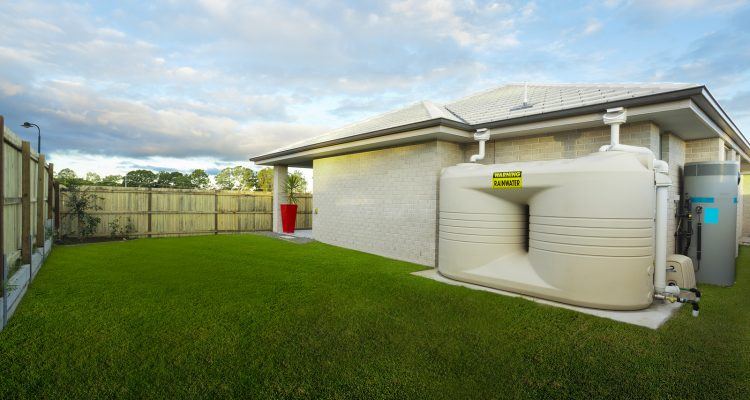Using liners for residential rainwater collection systems is standard practice for green builders in Central Oregon and beyond. Homeowners interested in environmentally friendly building practices can look to rainwater harvesting to reduce water bills, irrigate landscaping and lawns, as well as to reduce demand on groundwater. One of the simplest ways to reuse rainwater is to put a 55- to 90-gallon barrel at the end of a downspout or gutter to collect water from your home’s rooftop. Water captured in this way is most commonly used for non-drinking purposes such as gardening. However, with a professionally designed collection and filtration system, homeowners can enjoy clean rainwater for drinking and other potable purposes. Be aware that residential rainwater collection systems laws and programs vary state by state. Historically, Colorado prohibited individuals from collecting and storing the rain even though droughts and frequent water shortages are common. However, under House Bill 1005 that went into effect in 2016, homeowners living in Colorado are now able to utilize up to two rain barrels with a maximum capacity of 110 gallons to capture water from rooftops.
Residential rainwater collection systems
The benefits residential rainwater collection and storage systems offer to homeowners are numerous. One of the biggest rewards of harvesting water from the sky is that you can decide to install a system at any time. While rooftops are the most eco-friendly way for homeowners to capture water runoff, urban stormwater management systems divert water from large paved surfaces and roofs to professionally designed storage containers underground. Green architects and builders who design stormwater management systems understand their complexity. Large storage reservoirs and tanks are designed and built utilizing a system of tubes and liners to collect and store water runoff. Greywater is sometimes filtered to reduce contaminants before used to irrigate urban landscaping, school playing fields, or parks. City codes and regulations across the country now require residential builders to install low-flow fixtures—sinks, faucets, shower heads, and toilets—that consume less water per minute than older, traditional models. Green building certifications such as the Living Building Challenge and Earth Advantage award points or credits towards certification for water management and conservation practices.Is rooftop runoff water safe to drink?
The Washington Department of Ecology conducted an in-depth study to determine if water carried off rooftops during rainstorms contained pollutants. The roofing task force tested 16-types of roofing materials commonly used in home construction including green homebuilding. The products and materials tested for steep-sloped residential roofs were as follows:- Asphalt Shingles
- Straight Copper
- Painted Galvanized Steel
- Concrete Tiles
- Plain Wood Shingles
- Wood Shakes (chromate copper arsenate treated)



